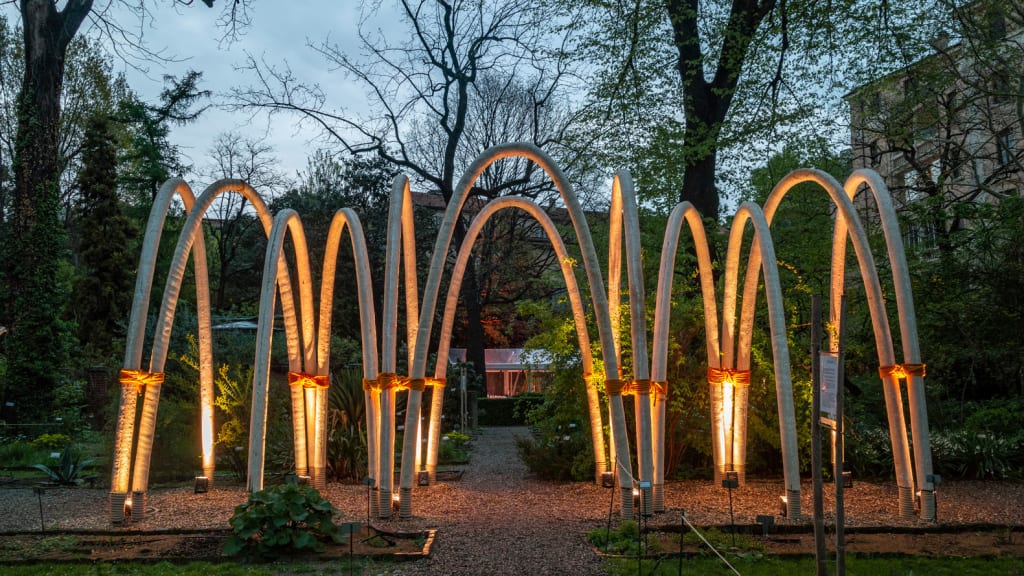Mushrooms have become many designers’ favorite food. But not because of how they taste: the root of mushrooms, called mycelium, can be used to make an organic material that’s sturdy enough to use in chairs, buildings, and even cities. It’s also been used to create faux leather, lab-grown meat, and even 3D-printed organs.

But mycelium doesn’t have to be purely practical: This year at the world’s largest design fair in Milan, Carlo Ratti Associati designed a series of elegant, 13-foot-high arches made out of one kilometer (or .6 miles) of the material. The 60 arches, which are artfully arranged in groups over a path in Milan’s botanical garden, were grown with the help of the Dutch Krown Bio lab over the course of two months. They create a whimsical architectural element in the gardens that looks right out of Alice in Wonderland.

The arches were designed using a technique called the inverted catenary method, which was invented in the 18th century to create compression structures–like arches–and later popularized by Spanish architect Antoni Gaudi. The technique involves hanging the arches upside down first to find their natural curve before turning them upright. After determining the ideal shape, the designers packed the mycelium into molds around a light wooden core before letting it grow and then dry.
Once the firm’s exhibition is over on April 19, the arches will be returned to the soil, fulfilling the installation’s name: The Circular Garden. That makes the arches different from most installations at Milan. Most temporary festivals or fairs are often full of one-off installations that end up being wasteful–just like the cheap conference swag that companies often give away. But Carlo Ratti Associati’s installation manages to demonstrate the potential of an emerging material in a way that is fully sustainable.
Recognize your brand’s excellence by applying to this year’s Brands That Matter Awards before the early-rate deadline, May 3.













